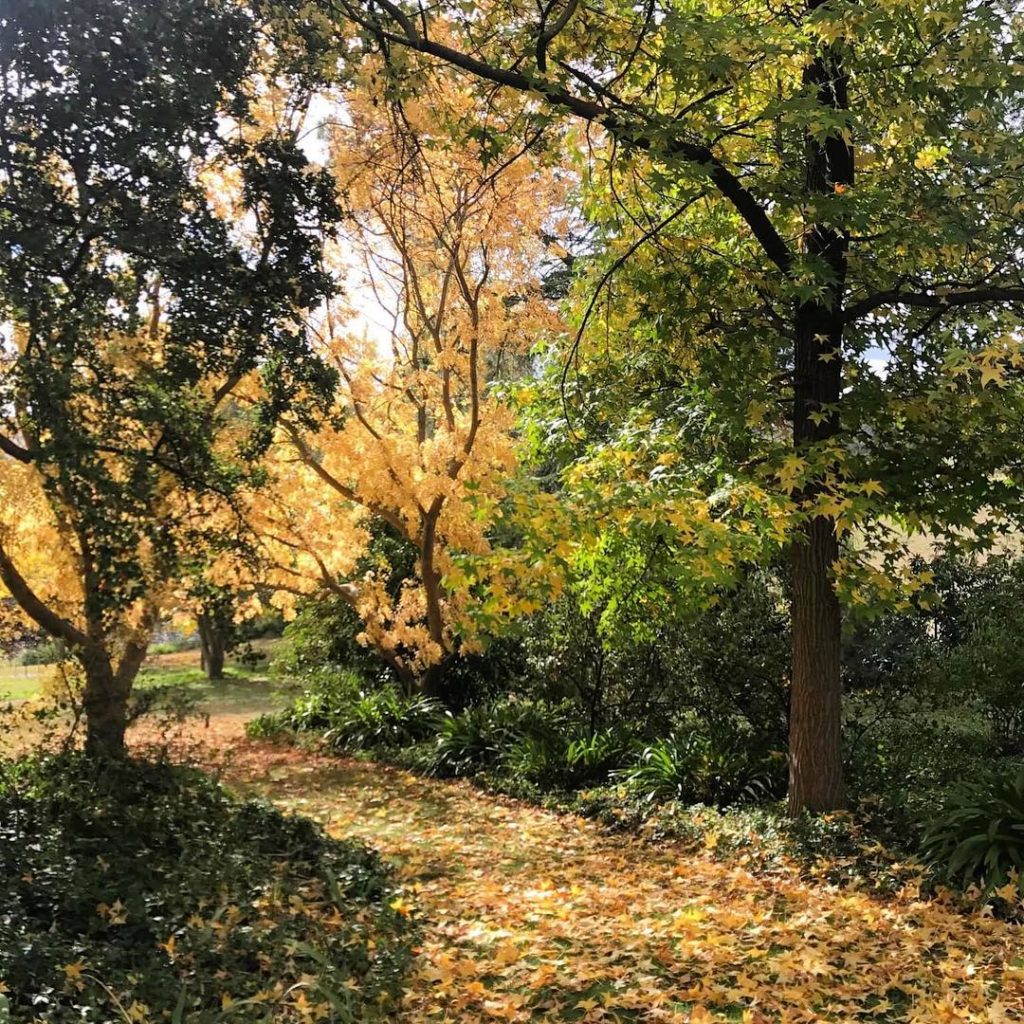Albeit treated as a weed and nuisance in the paddock, the dark sweet fruit from our blackberry trees makes excellent jam in the kitchen. This is best served on hot, buttery toast with a cup of coffee.
Ingredients
500gms of blackberries
500gm of jam sugar
1 lemon
Method
1. Place two small plates in the freezer.
2. Combine blackberry and sugar with the finely grated rind and juice of one lemon in a heavy based saucepan.
3. Bring to the boil and simmer for 35-40 mins (stirring occasionally but careful not to break up the fruit).
4. Test the jam consistency by spooning a small amount onto a chilled plate. Run your finger through it to draw a line.
If the jam stays apart (i.e. does not run) it is ready. If not continue to simmer for another 5 – 10 mins and try again.
5. Once ready spoon into sterilised jars and seal.
6. Keeps for 3 – 6 months in a dark spot. Consume within a month of opening and keep in the fridge.
Autumn activities
- During March our rams and ewes will be joined. The rams will work hard over 5 weeks and we will hopefully expect thousands of lambs on the ground in October.
- Superphosphate is spread in early March to catch the autumn rain. This year we will have both a ground crew and plane applying the fertiliser.
- Shearing will commence in May this year. A team of shearers travel to Markdale each day and will shear thousands of sheep through the week. It is an exciting time on the farm with all hands on deck to ensure the sheep are kept in good condition, the beautiful fine wool fleeces are treated with care and the shearers are well fed!
- Our bees are being checked regularly and are enjoying their home on the hill overlooking the pond. However our honey production has been lower than expected because of the smoke from the bushfires in the Southern Highland and drought conditions. A decision has been made to not ‘raid’ the hive this year and instead to let the bees have their honey for the long winter months ahead.
- It’s time to plant the garlic again. Garlic will grow from March to November and this year we are again thinking of planting Italian White and Monaro Purple.
- Other autumn veggies to be planted include onion, broccoli, cabbage, lettuce, cavolo nero and leeks.
Meet Phil, Markdale’s gardener who lovingly looks after the 5 acre Edna Walling garden.
This year Markdale will be a feature in the Crookwell Garden Festival held over the 7 and 8 November. It is an exciting time and a great opportunity to showcase his hard work.
For guests staying at the farmstay, Phil is always happy to answer any questions whilst they are exploring the beautiful landscape.
Name: Phil Rose
Position: Head Gardener
How long have you worked at Markdale?
17 months.
What attracted you to the role?
The opportunity to work in an Edna Walling designed garden and as the Head Gardener being able to bring my own style and work with the family to achieve a similar vision.
What does a typical day look like for you?
It varies depending on the season and what is coming up. At the moment I’m concentrating on hedging and maintenance in preparation for all the Autumn leaves that will start to fall.
What aspect of your job do you enjoy most?
I love being able to step back and see the overall beauty of this stunning garden and landscape beyond. It truly is a remarkable property.
What part of the garden would you recommend guests not miss?
There are so many beautiful features of the garden that it’s hard to name just one. The main lawn with the stone wall and the wisteria arbour are always favourites.
What do you enjoy doing in your spare time?
Spending time with my family – swimming, playing, camping.
If you could meet anyone (living or dead) who would it be?
Peter Cundall.
What are three words that best describe you?
Honest, hardworking, modest.
The garden surrounding the main homestead is acknowledged as one of the great country gardens of Australia. First planted in the 1920’s, the garden was re-designed in 1949 by the pioneer of Australian landscape gardening Edna Walling. The pergola of blue and white wisteria, the stunning golden and weeping elms, the profusion of roses, the stone-walled garden and the sweeping lawn down to a small lake are all part of the Walling signature.
Walling was determined to exemplify and take advantage of the glorious natural scenery of paddocks and hills and today silver birch, aspens, pinoaks, hawthorns, golden elms, golden ash and claret ash, spireas, viburnums and native eucalypts shelter and frame the garden without obscuring the view.
Overall the garden remains substantially as Edna Walling originally planned. A characteristic of her work, are the dry stone walls constructed by E. R. Hammond, the sweeping lawns merging with mown paddock; informal curving paths leading the eye onward to the enchanting hidden depths of the garden and to the hills beyond.
Today garden enthusiasts or those who simply like a stroll or picnic can enjoy the garden in its full glory, when staying at the farm stay or on open garden days.
Phil, our Head Gardener, is constantly look to improve the beauty in sympathy with Walling’s vision and at the moment as the trees begin to shed their leaves in shades it is a truly magical place.




